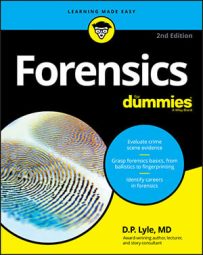In 1971, John List lived in a large home in Westfield, New Jersey, with his wife, three teenage children, and his mother. Neighbors noticed that they hadn't seen the List family for some time and that the home seemed deserted, except for the fact that lights throughout the house blazed brightly every night.
On December 7, police dropped by to investigate and found four bodies neatly placed on sleeping bags on the floor of a room near the back of the house. The bodies were John List's wife, Helen, and their three children. In an upstairs bedroom, they found the body of John's mother, Alma. Each had been shot.
John List, however, was nowhere to be found, and even more disturbing were five addressed envelopes that police found taped to a filing cabinet.
John List, an influential member of the local Lutheran church, explained his rationale for committing the multiple murders in letters found in the envelopes. He said he was not good with money, his mismanagement had driven the family to the brink of bankruptcy, and he didn't want his family subjected to a life on welfare, so he spared them this humiliation by killing them.
Two days later, List's car turned up in long-term parking at New York's John F. Kennedy International Airport (JFK). Wanted posters were spread immediately from coast to coast, and because of John List's fluency in German, throughout West Germany and German-speaking areas of South Africa. The result: no leads and no John List.
Two years later, Bernard Tracey joined the Westfield Police Department and quickly became interested in the case. Thirteen years later, he was no closer to finding the fugitive. In an attempt to rekindle interest in the case, Tracey approached Weekly World News, and the supermarket tabloid ran a story on the John List case on February 17, 1986. Again, no new information came forth.
In the meantime, however, Wanda Flanery of Aurora, Colorado, thought the photograph that accompanied the tabloid story closely resembled her neighbor, Bob Clark. She mentioned her suspicion to his wife, Delores, who scoffed at the idea that her church-going husband could be a murderer. Shortly thereafter, the Clarks ran into financial difficulties caused by Bob's poor handling of their money, and they relocated to Richmond, Virginia.
Still frustrated by his inability to crack the case, Tracey approached the television show America's Most Wanted, which initially showed little interest in the case. However, when Tracey contacted them once again a year later, the show's producers decided to look into the situation, which proved to be the major turning point in the case.
They hired forensic sculptor Frank A. Bender to fashion a bust of what John List might look like some 18 years after his last known photograph.
Dr. Richard Walter of the Michigan Department of Corrections was brought in to offer a profile of John List as an aid to reconstructing his likely current image. Walter thought that List's religious background made it unlikely that he'd ever undergo any plastic surgery and that his lifestyle wouldn't be one of diet and exercise — valuable information considering that either factor could alter List's pattern of aging.
FBI specialist Gene O'Donnell then entered the picture. Using the latest computer technology and the old photograph of John List, he digitally aged the likeness in the photo by adding gray and receding hair and fleshy jowls. He also included thick-rimmed glasses similar to the ones List wore in the photo.
When America's Most Wanted aired the John List case along with the aged photo May 21, 1989, more than 250 calls came in. One from an anonymous caller in Colorado said that John List was living in Richmond, Virginia, under the name of Bob Clark. The caller, it turns out, was a relative of Wanda Flanery.
Fingerprints proved that Bob Clark and John List were the same person, and on April 20, 1990, nearly two decades after murdering his family, John List received a life sentence.

